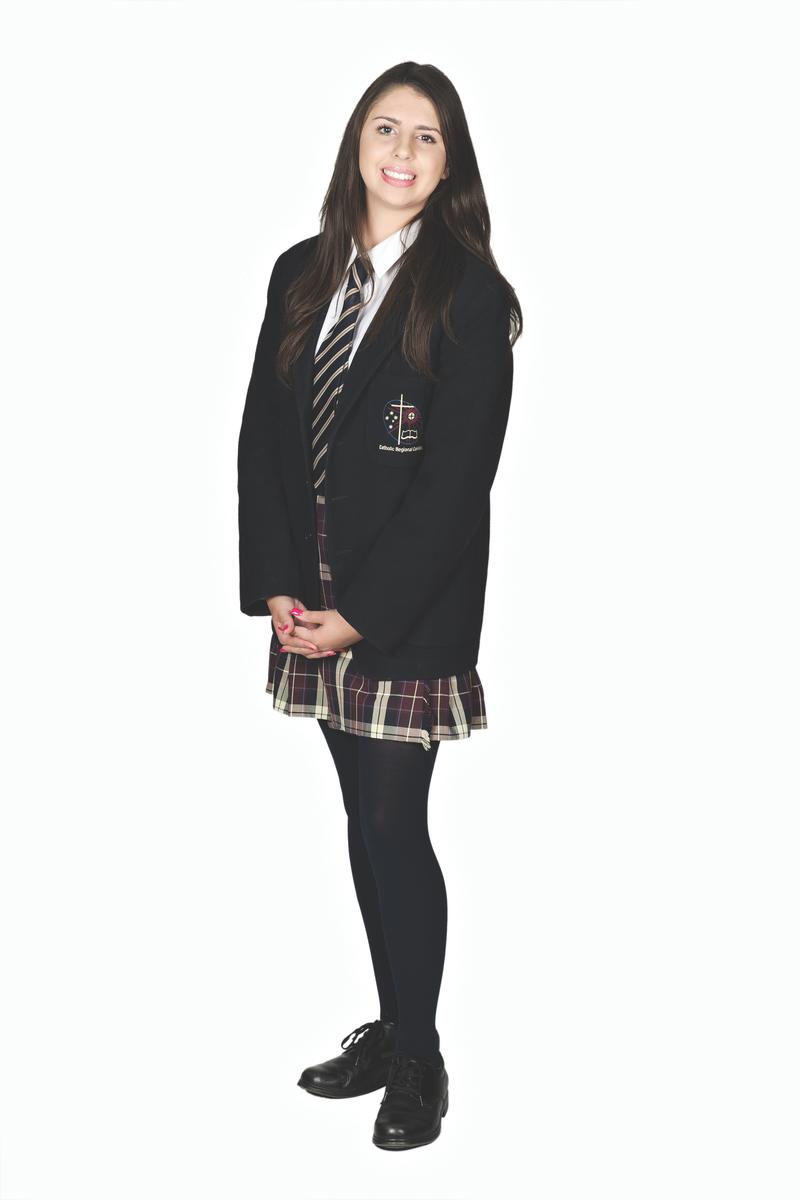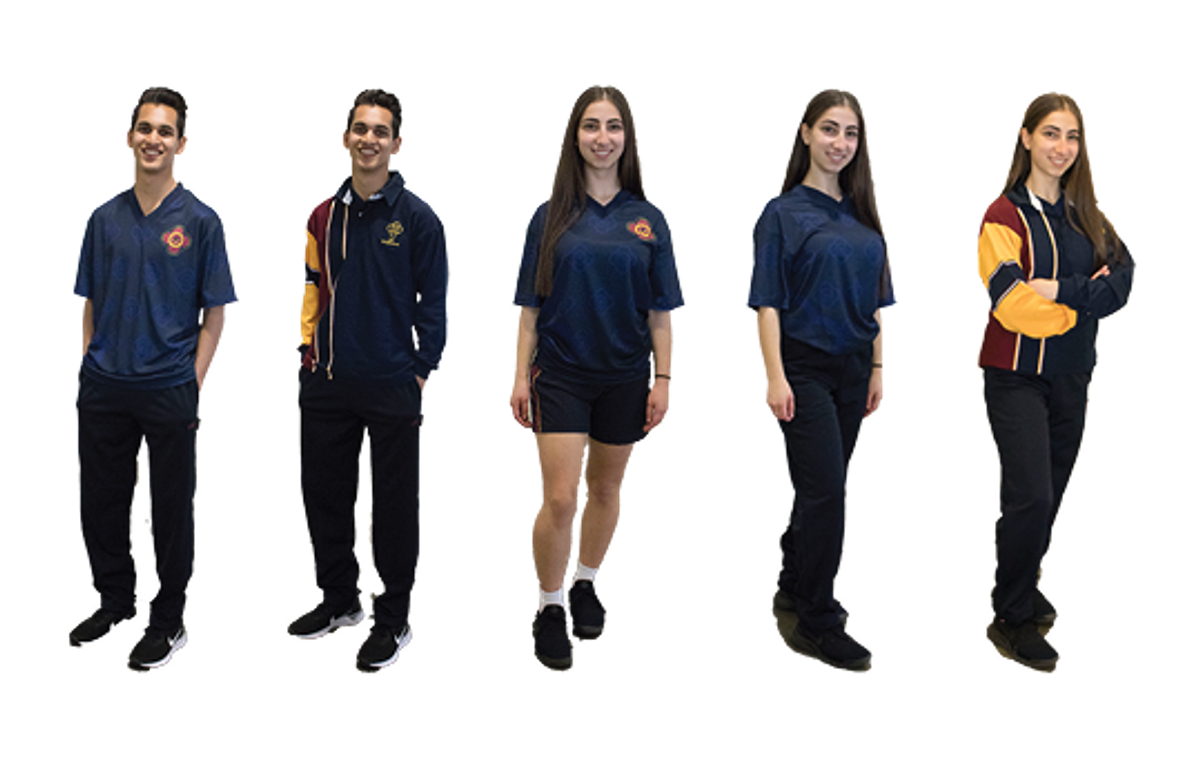Deputy Principal's Report

Term 2 – Planning, preparing, revising
Pope Francis, in his recent message to the youth, Christus vivit, states, “We can, in fact, spend our youth being distracted, skimming the surface of life, half-asleep, incapable of cultivating meaningful relationships or experiencing the deeper things in life. In this way, we can store up a paltry and unsubstantial future. Or we can spend our youth aspiring to beautiful and great things, and thus store up a future full of life and interior richness. If you have lost your inner vitality, your dreams, your enthusiasm, your optimism and your generosity, Jesus stands before you as once he stood before the dead son of the widow, and with all the power of his resurrection he urges you: “Young man, I say to you, arise!” (Lk 7:14).
Term Two can be a time where enthusiasm and inner vitality can suffer. This year continues to race past and it is important to be thinking forward and preparing for the end of the year. The course work being completed in Term 2 is crucial but can often overshadow the ongoing study and revision that needs to take place to prepare for assessments and outcomes. VCE students need to be aware that they are not only striving to do their best, but are in fact competing with students at this College and from across the state for results that will secure their future pathway. For all students continuing to plan their work, to revise and consolidate their learning throughout the year, will increase the likelihood of success.
As we move through this term the emphasis on formal assessment will increase for all students. All students are required to submit assessment tasks or SAC (School Assessed Coursework) in a timely manner that is in accordance with the expectation of the relevant teacher. Where this does not occur parents will receive written notification. It is important that all families within our community are familiar with the Student Attendance, Achievement and Promotion policy of the College. This policy outlines the minimum attendance requirements for students within each unit of study that they are engaged in and provides details regarding the requirements for students to progress from one year level to the next. The policy can be viewed on the College website – Current Students – Student Policies.
As Winter approaches motivation wanes and the pressure of the year builds. Good communication is key and it is important for the parents of students completing VCE to be aware that one of the greatest stressors for the students in the final years of their education can be parent-student relations. According to Dr. Michael Carr-Gregg (The Age, 2016) “All parents, friends and relatives of a young person (completing VCE) should worry less about the quantity of work a student is engaging in and, instead, focus much more on their emotional wellbeing”.
Deakin University agrees with this and advises parents to “Support your child to pursue their interests” and to “Offer a supportive, calm environment for study.” The key is to find a healthy balance.
According to the Mission Australia Youth Survey from 2012, coping with stress and school or study problems remain major concerns for respondents. As well as managing school, many young people were also trying to cope with work, family and social commitments. The cumulative effect of these demands appears to be leaving many young people feeling besieged and struggling to cope.
From a parent’s perspective, it is best to adopt the role of the supportive bystander, eagerly cheering from the sidelines but not being a major player and to adopt the motto “I’m here to help and offer any advice I can when you need it”. Parents can ensure that students stick to the basics: making sure that they eat right, get plenty of sleep and regular exercise. Positive reinforcement is the key. When you see a good effort is being made, it is useful to praise the student for it showing them that their dedication has been noticed. It is vital to maintain an open line of communication with your son/daughter; conversations reduce the likelihood of serious misunderstandings, particularly during stressful times.
There is a huge amount of research data that states that when parents are involved in their children’s education at home, their children perform better at school. This performance is further enhanced, if there is a good relationship between teacher and parent based on mutual respect and trust.
The Pope concluded his message with a wish – “Dear young people, my joyful hope is to see you keep running the race before you, outstripping all those who are slow or fearful. Keep running, “attracted by the face of Christ, whom we love so much, whom we adore in the Holy Eucharist and acknowledge in the flesh of our suffering brothers and sisters. May the Holy Spirit urge you on as you run this race. The Church needs your momentum, your intuitions, your faith. We need them! And when you arrive where we have not yet reached, have the patience to wait for us”.
ASSESSMENT IN THE VCE – HOW DOES IT WORK?
One aspect of the Year 11 VCE Program that students often find different from what they have experienced in the past is the nature of the assessment that occurs. VCE assessment contains two distinct elements.
Firstly, students are provided with a score that is used to indicate their level of achievement. This score is arrived at through student completion of numerous SAC (School Assessed Coursework) tasks or SAT (School Assessed Tasks) Projects in selected subjects. This assessment is designed to challenge all students. As such these tasks should produce a range of results with students who have demonstrated the highest levels of knowledge and skills receiving the highest scores and those who are still establishing these skills receiving the lowest scores. This is the nature of scored assessment in the VCE as it looks to rank all students in a given study from highest to lowest. This process is particularly important in Unit 3 and 4 (Year 12) studies and we look to replicate this process in Unit 1 and 2 (Year 11) studies in order to prepare students for the rigours of the final year of secondary education. The second element of assessment in VCE studies pertains to the student’s ability to demonstrate achievement of a range of learning outcomes. These learning outcomes are pre-determined by the VCAA (Victorian Curriculum Assessment Authority) and are specified in documents referred to as Study Designs. In order for a student to be eligible to receive a Satisfactory (S) result they must demonstrate achievement of several learning outcomes within each VCE unit. These learning outcomes may be seen as the minimum standard of knowledge and skills that students must demonstrate in order for the teacher to assess them as having achieved the learning outcome. If a student does not achieve the learning outcome they will receive a Not Satisfactory (N) result for that unit of study.
In order to reduce the amount of assessment that takes place, teachers will generally use SAC tasks to provide a score and to assess a student’s achievement of the learning outcome.
As such, students are required to achieve a minimum score of 50% on SAC tasks in order to be considered to have achieved the relevant learning outcome. If a student receives less than 50% they will be given a second opportunity to complete the SAC to receive an S result. If the student is then unsuccessful a second time teachers will then use alternative tasks to look for evidence that the student has achieved the learning outcome. If, at this point, the student is unable to demonstrate the relevant skills and knowledge the teacher will award an N result.
If parents are unsure about the way that assessment works in the VCE it is strongly suggested that they make contact with subject teachers to seek clarification.
June Mid-Year Examinations and GAT
Between June 6th and 14th, Year 11 VCE students will have midyear exams in the College Hall. The Year 11 examinations are important for students to gauge their level of performance in their individual subjects, and to experience the formality of VCE examinations. The College considers all examinations at Year 11 and 12 to be essential in preparing students for success in the VCE.
All Year 11 and 12 students undertaking a VCE Unit 3 & 4 sequence in 2019 will be undertaking the General Achievement Test (GAT) on Wednesday June 12.
All Unit 3 English and English Language students will participate in a trial Exam on Tuesday June 11.
Study and preparation for the exams requires good time management
1. Given that there are 168 hours in the week, students should consider:
What is your total commitment of time for the following?
| Your Time/ Week: | Recommendations: |
| School + Homework study | = 40 hours minimum |
| Leisure/Sport | = 12 hours minimum |
| Part-time work | = maximum 9 hours |
| Sleep | = 8 – 9 hours/day |
| Travel times | = ? |
| Leisure/TV/Visiting/Relaxation | = ? |
| Other | = ? |
2. Reflect on this: Are there time wasters here? Are there opportunities to balance some of your activities? Can more time be found to allocate to your study commitments? Are there some areas that could have a negative impact on your education/ life balance?
3. Use the Study Techniques and Approaches section of the Student Diary to complete a revised weekly plan that creates life balance, to put you in control of your education at CRC Sydenham
Students will receive a detailed timetable outlining events at the end of semester 1. We wish all of our students well, it is not a matter of luck but sound preparation that will generate results that reflect each students’ potential.
College Uniform Requirements
As we are now into Term 2, I would like to remind parents and students that students are to wear the College winter Uniform.
The College has a lovely uniform, and students are expected to wear it correctly with pride. This attention to personal appearance helps to promote and express a sense of self-worth. The tidy wearing of our common dress code is one of the criteria used by employers and the public at large to evaluate the worth of an educational institution, and therefore it is in the best interests of all to have it worn well.
Winter Uniform (To be worn in Terms 2 and 3 only)
Boys
Blazer: CRC Blazer
Trousers: Navy Blue with CRC monogram.
Shirt: White long sleeve shirt with CRC monogram. CRC shirt must have the top button done up and be tucked in.
Jumper: CRC Jumper can only be worn to and from the College if under the Blazer.
Tie: CRC Sydenham tie is compulsory and to be done up to the shirt collar and worn correctly.
Shoes: Black leather lace up school shoes. No street shoes or black runners.
Socks: Navy Blue.
Girls
Blazer: CRC Blazer
Winter Kilt: CRC Tartan. Length: On the knee.
Pants: Navy Blue CRC Tartan with CRC monogram.
Shirt: White long sleeve shirt with CRC monogram. CRC shirt must have the top button done up and be tucked in.
Jumper: CRC Jumper can only be worn to and from the College if under the Blazer.
Tie: CRC Sydenham tie is compulsory and to be done up to the shirt collar and worn correctly.
Tights: Navy blue.
Socks: White short or long socks
Shoes: Black leather lace-up school shoes. No slip on, ballet or T-Bar style shoes.
Scarf: Navy or maroon scarf only.
Sports Uniform
The students are to wear the sports Uniform on days when they have PE practical classes or when they have been given permission to do so for activities such as training for, or competing in official College sport and Wellbeing sessions.
Sports Shirt: CRC Sydenham polo shirt (with emblem)
Pants: Navy school track pants with CRC embroidery (Uniform shop issue only)
Shorts: Navy and maroon school P.E. Shorts (Uniform shop issue only)
Rugby Top: Navy and Maroon CRC Sydenham rugby top. (Uniform shop issue only)
Spray Jacket: Navy CRC approved jacket to be worn with sport uniform only. (Uniform shop issue only)
Jewellery
Earrings are restricted to one small plain stud or sleeper in each ear lobe.
No facial piercing jewellery may be worn. (This includes no clear caps in existing facial piercings)
No necklaces, rings, bracelets or bangles other than a medical emergency bracelet or a discreet necklace with a cross/ crucifix.
Appearance
No extreme hairstyles (This includes extremes of length, style or colour (only natural shades) as deemed by the Principal.)
No tails.
Hair accessories should be navy. No bandannas to be worn.
No tattoos are to be visible whilst students are in college uniform
Any make up is to be discreet. Eye make-up or nail polish should be natural shadings only.
If there is a legitimate reason for any item of the uniform not being able to be worn, a note from a parent or guardian is required. The note must be given to, and signed by the Cluster Coordinator who will allow a formal exemption to be given for the time necessary to meet uniform requirements. Students who do not produce a note are in breach of College policy and must accept the consequences of their actions. If a student attends and they are out of uniform without a note, parents will be contacted to bring in the correct uniform, or students may be signed out to go home. A breach of the uniform policy will result in an internal suspension and the accumulation of unapproved absences until the correct uniform is worn. As matters concerning the incorrect wearing of uniform are time consuming and against the spirit of the College, parents/guardians are asked to adhere to the College’s uniform requirements.






